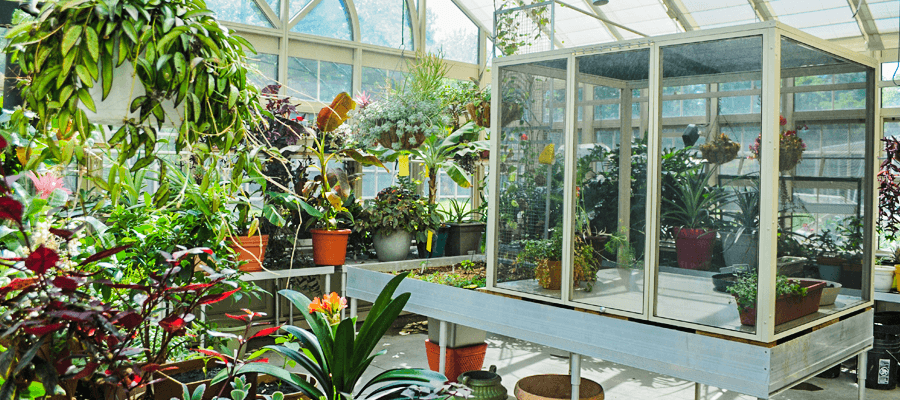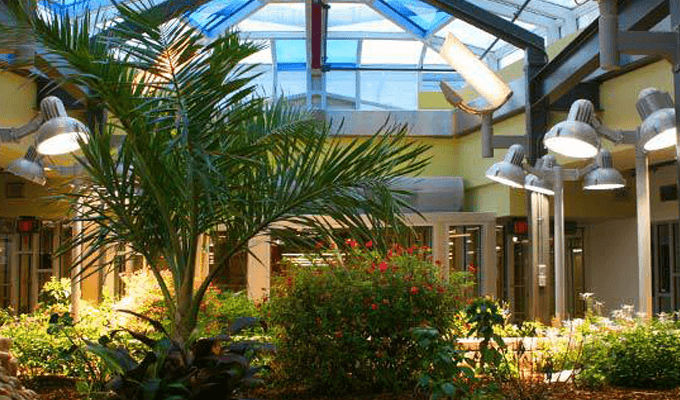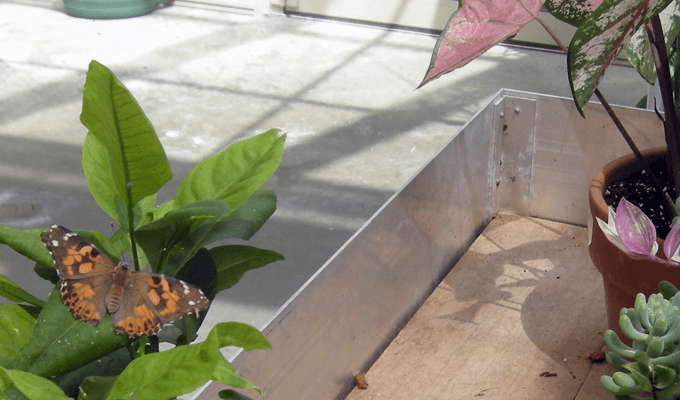Butterfly Enclosures
Almost any of Solar Innovations®’s glass structures can be converted into a butterfly greenhouse or butterfly conservatory. Whether you’re adding a butterfly greenhouse to your home or constructing a grand public butterfly exhibit, our greenhouse experts will design an environment that will allow your butterflies to prosper. Solar Innovations® designs butterfly conservatories based on the micro-climate requirements for the species of butterflies and their host plants in order to mimic their natural habitat as closely as possible. These enclosures create closely controlled ecosystems; temperature, humidity, fertilizer, water, and plants must all be given equal consideration and planning.

Design Process
The design starts with the customer’s request for a conservatory size and configuration and then proceeds with research on the microclimate and habitat requirements for the butterflies and plants. Some conservatory designs need to accommodate both tropical and temperate species and require partitioned rooms with multiple, climate-controlled zones for heating, cooling, humidity, and lighting regimes. These systems can be fully automated and controlled via a web interface that will also provide real-time climate data for each zone. Solar Innovations® takes the design strategy further by analyzing the location-specific solar and climate data to customize the optimal energy efficient type of insulated glass, which will determine the intensity and quality of the incoming solar radiation for the plants and butterflies. More energy efficiency is built into the design by integrating thermally broken vents to passively control the interior climate, saving operational costs associated with active heating and cooling systems.
Interior Plants Selection
The interior plant types and arrangement are critically important for the success of the butterflies and their life cycle requirements. Solar Innovations® can assist with the interior plant layout by providing information about the incoming sunlight and its location throughout the year in the interior space. In the larval stage, the butterflies require certain plant leaves for food, while in the adult stage, the butterflies use their proboscis to ingest nectar from flowers and water. The butterflies play a vital role in the life cycle of the plants by pollinating as they feed. The health of the plants directly affects the butterfly populations and vice versa, and the success of the entire community is dependent on a carefully designed conservatory.
Butterfly Friendly Environments
- Butterflies require flat stones on the interior of a greenhouse; they will not stop, rest, or eat without a flat place to land.
- Butterflies prefer to drink from wet sand or a mud puddle. Most will not drink from a “clean” water source.
- It is difficult to feed butterflies with just the plants located in a greenhouse, so “nectar trays” are required. Sponges coated in sugar water or honey can be placed on trays for the butteries to feed upon.
- When purchasing plants and food trays for the greenhouse, remember that butterflies are attracted to red and blue.
- Oranges and other fruit can be squeezed (or chopped into pieces) and placed throughout the greenhouse to help feed the butterflies.
- “Butterfly houses” should be placed inside the butterfly greenhouse. These houses are simple wooden boxes with thin slits cut into them; the butterflies will use these boxes to sleep.
- Caterpillar species are particular about their food sources, for example, some species only eat passion flower vines, so consider your caterpillar’s likes and dislikes while planning.
- Butterflies raised from caterpillars within the greenhouse walls will be more tolerant of the indoor environment.




